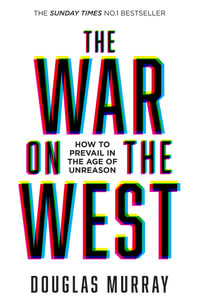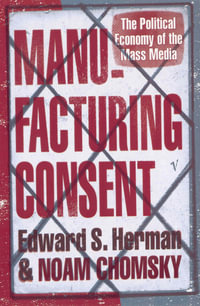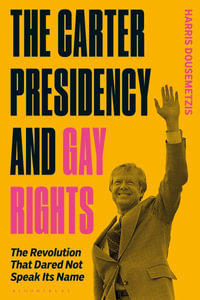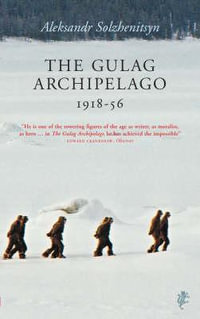VOLUME 1: BASIC CONCEPTS AND HISTORICAL FOUNDATIONS Attitudes versus actions - LaPiere, R.T. Attitudes - Allport, G.W. The sociological significance of measurable attitudes - LaPiere, R.T. A consideration of beliefs, and their role in attitude measurement - Fishbein, M. Attitude measurement: a cognitive perspective - Tourangeau, R. A simple theory of the survey response: Answering questions versus revealing preferences - Zaller, J. and Feldman, S. Measuring social distances - Bogardus, E.S. Attitudes can be measured - Thurstone, L.L. A technique for measurement of attitudes - Likert, R. A comparison of the Thurstone and Likert techniques of attitude scale construction - Edwards, A.L. and Kenney, K.C. A basis for scaling qualitative data - Guttman, L. A technique for the construction of attitude scales - Edwards, A.L. and Kilpatrick, F.P. Attitude Measurement - Osgood, C.E., Suci, G.J. and Tannenbaum, P.H. A technique and a model for multi-dimensional attitude scaling - Abelson, R.P. Latent structure analysis - Lazarsfeld, P.F. Convergent and discriminant validation by the multitrait-multimethod matrix - Campbell, D.T. and Fiske, D.W. Reliability and validity assessment in attitude measurement - Bohrnstedt, G.W. VOLUME 2: DESIGNING DIRECT MEASURES Open versus closed questions - Schumann, H. and Presser, S. Strong arguments and weak evidence: The openosed questioning controversy of the 1940s - Converse, J.M. The wording of questions - Rugg, D. and Cantril, H. Experiments in wording opinion questions - Kalton, G., Collins, M., and Brook, L. Three-point Likert scales are good enough - Jacoby, J. and Matell, M.S. Are three-point scales always good enough? - Lehman, D.R., and Hulbert, J. The relationship between number of response categories and reliability of Likert-type questionnaires - Masters, J.R. The optimal number of response alternatives for a scale: A review - Cox, E.P. Feeling thermometers versus 7-point scales: Which are better? - Alwin, D.F. How often is often? - Hakel, M.D. Often is where you find it - Chase, C.I. Vague quantifiers - Bradburn, N.M. and Miles, C. Extreme response on a Likert scale - Albaum, G. and Murphy, B.D. "Don't know": Item ambiguity or respondent uncertainty? - Coombs, C.H. and Coombs, L.C. Decisions about ignorance: Knowing that you don't know - Glucksberg, S. and McCloskey, M. "No-opinion" filters: A cognitive perspective - Hippler, H.J. and Schwarz, N. Should we take don't know for an answer? - Gilljam, M., and Granberg, D. The impact of no opinion response options on data quality: Non-attitude reduction or an invitation to satisfice? - Krosnick, J.A., Holbrook, A.L., Berent, M.K., Carson, R.T., Hanemann, W.M., Kopp, R.J., Mitchell, R.C., Presser, S., Ruud, P.A., Smith, V.K., Moody, W.R., Green, M.C., and Conaway, M. Response alternatives: The impact of their choice and presentation order. - Schwarz, N. and Hippler, H.J. The effect of ordinal position upon responses to items in a checklist - Campbell, D.T. and Mohr, P.J. The effects of offering a middle response option with opinion questions - Kalton, G., Roberts, J. and Holt, D. The middlemost choice on attitude items: Ambivalence, neutrality, or uncertainty - Klopfer, F.J. and Madden, T.M. Experiments with the middle response alternative in survey questions - Bishop, G.F. The measurement of attitudes - Krosnick, J.A., Judd, C.M. and Wittenbrink, B. The retrospective question - Fink, R. VOLUME 3: OBSTACLES TO DIRECT MEASUREMENT Response sets and test validity - Cronbach, L.J. The great response-style myth - Rorer, L.G. Attitude intensity, importance and certainty and susceptibility to response effects - Krosnick, J.A. and Schuman, H. Response strategies for coping with the cognitive demands of attitude measures in surveys - Krosnick, J.A. Effects of presenting one versus two sides of an issue in survey questions - Bishop, G.F., Oldendick, R.W. and Tuchfarber, A.J. Not forbidding isn't allowing: The cognitive basis of the forbid-allow symmetry - Hippler, H.J. and Schwarz, N. The effect of question order on responses - Bradburn, N.M. and Mason, W.M. An evaluation of a cognitive theory of response-order effects in survey measurement - Krosnick, J.A. and Alwin, D.F. Context and congruity in survey questionnaires - Schuman, H., Kalton, G. and Ludwig, J. Cognitive processes underlying context effects in attitude measurement - Tourangeau, R. and Rasinski, K.A. Acquiescence: Measurement and theory - Martin, J. Controlling for acquiescence response set in scale development - Winkler, J.D., Kanouse, D.E., and Ware, J.E. Privacy and the expression of white racial attitudes - Krysan, M. The effect of black and white interviewers in black responses - Schuman, H. and Converse, J.M. The nature of belief systems in the mass public - Converse, P.E. Pseudo-opinions on public affairs - Bishop, G.F., Oldendick, R.W., Tuchfarber, A.J. and Bennett, S.E. Public opinion and public ignorance: The fine line between attitudes and nonattitudes - Schumann, H. and Presser, S. Question wording effects: Presenting one or both sides of the case - Hedges, B.M. Nonattitudes: A review and evaluation - Smith, T.W. VOLUME 4: EXPANDING THE MEASUREMENT HORIZONS The indirect assessment of social attitudes - Campbell, D.T. New technologies for the direct and indirect assessment of attitudes - Dovidio, J.F. and Fazio, R.H. Evidence for racial prejudice at the implicit level and its relationship with questionnaire measures - Wittenbrink, B., Judd, C.M. and Park, B. Measuring individual differences in implicit cognition: The implicit association test. - Greenwald, A.G., McGhee, D.E. and Schwartz, J.L.K. Implicit attitude measures: Consistency, stability and convergent validity - Cunningham, W.A., Preacher, K.J. and Banaji, M.R. Implicit measures in social cognition research: Their meaning and uses - Fazio, R.H. and Olson, M.A. Physiological techniques of attitude measurement - Mueller, D.J. Galvanic skin response to negro and white experimenters - Rankin, R.E. and Campbell, D.T. Attitude and pupil size - Hess, E.H. A projective method for the study of attitudes - Proshansky, H.M. Measuring attitudes by error-choice: an indirect method - Hammond, K.R. Asking the embarrassing question - Barton, A.M. The lost-letter technique: A tool for social research - Milgram, S., Mainn, L. and Harter, S. Twenty years of bogus pipeline research: A critical review and meta-analysis - Roese, N.J. and Jamieson, D.W. Randomized response: A survey technique for eliminating evasive answer bias - Warner, S.L. A multiple-indicator approach to attitude measurement - Cook, S.W. and Selltiz, C. Response latency as a signal to question problems in survey research - Bassili, J.N. and Scott, B.S. Considered opinions: Deliberative polling in Britain - Luskin, R.C., Fishkin, J.S. and Jowell, R. A different take on the deliberative poll: Information, deliberation and attitude constraint - Sturgis, P., Roberts, C. and Allum, N. Equivalence in cross-national research - Przeworski, A and Teune, H. Developing comparable questions in cross-national surveys - Smith, T. Social desirability bias: A demonstration and technique for it reduction - Gordon, R.A.
























